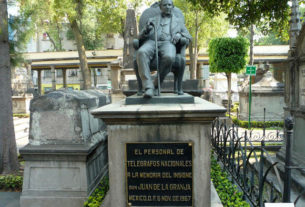The title of this travel book sounds a bit odd to us now. But the question of whether Baja California was an island was in doubt for a very long time. In fact, as late as 1737, a map was drawn by a German Jesuit that showed the peninsula as an island. Now, of course, we can settle for this author’s description of it as an 800-mile dead end.”
Bruce Berger is an excellent guide to the Baja. He’s been going there since the mid ’60s, having driven the length of the peninsula at least three times when that meant travelling more than 1,000 kilometers of single lane dirt road. In my humble opinion that would be considered adventure travel. One could drive for a day and meet only one other car. And you would never dream of leaving without taking plenty of food, water and gasoline plus whatever extras and spare parts you might need to fix auto problems along the way.
Chapter 2 of Berger’s book is an account of the peninsula’s history, with emphasis on the primitive nature of the ancient tribes who lived there. As the author points out, they weren’t cannibals, but they had at least one rather revolting eating habit. They were evidently so enamored of the pitahaya cactus that they picked the seeds out of their feces and ate them again. They also liked to tie pieces of string to their meat, swallowing them and then pulling them back out and eating them over and over for the sheer pleasure of it. One writer described that as a second harvest”.
This period, covering thousands of years, was eventually followed by the centuries of exploitation that ensued following the discovery of the area by Cortes. Between conquistadores, Jesuits and both English and Spanish pirates, the region particularly the lower part of the peninsula saw plenty of action. And long afterwards, even the Americans in 1941 were talking of annexing the territory. In the wake of Pearl Harbor, the Chairman of the Senate Armed Services Committee, proposed that the U.S. annex Baja California to protect it from Japanese submarines. The idea, however, met with little enthusiasm in any quarter.
La Paz, the principal city, which now sounds like a bustling center of activity, was only founded in the last century. However, it has attracted a large number of people from the mainland”. (There’s that island mentality at work! The rest of Mexico is referred to consistently as the mainland” throughout this book.) La Paz’s population has doubled every decade since 1950 and now boasts well over 160,000 people. The ferry from the other coast was started in 1964 and that gave a big boost to the area. To a lesser degree, the completion of the paved highway from the north in 1973 also played a part.
According to the author, most of the arrivals in those years were mid-level professionals: engineers, doctors, professors, teachers, many of them escaping the pollution, congestion and crime of mainland Mexican cities.” The Mexico City earthquake of 1985 also produced a boost in the city’s population. And from Berger’s description the influx of people has created a pretty lively and interesting town. Chapter 5, Port of Illusion”, concerning La Paz, is one of the most interesting sections of the book.
One author is quoted as saying: that Paceños with money to travel were more likely to go to Europe than to mainland Mexico or the United States, leavening the town with the ideas they brought back.” Another credits La Paz’s openness to its having been a port touched by the world.” It was at one time a duty free port and a great place to shop.
Although I like this book I have to say that, overall, I find it rather uneven. The chapters on the history and the people and the nature of the coastline and the terrain are relevant and informative. And the chapter on La Paz makes me want to visit the place, as I expect to do soon. But there are other chapters that simply don’t belong in this volume. One, for instance, concerns the author’s adventures with one of La Paz’s music schools. Berger is a professional pianist, as well as an author, and has an amusing story about being coerced into giving a benefit concert for the local Escuela de Musica. However, it’s an episode that fills out the book but adds absolutely nothing to a better understanding of the area.
Also, I’ve never seen a travel book that needs a map quite as much as this one does. It’s a definite lapse on the part of the publisher and the author. Even a simple line drawing would be helpful, showing some of the towns, especially in the north, as well as the route of the new paved highway which has been such an important part of Baja’s development. By the time I got to page seven I was reaching for my book of Mexican road maps and making sure it was always handy when a simple one page map inside the book would have been much more convenient. After all, there isn’t that much to include on a map of the Baja and it is surely unknown territory to the majority of readers.
Verdict: If you’re contemplating a trip to the peninsula, here’s one good place to start your research. Or, if you’re simply curious about what is still a rather remote area of the globe, give Bruce Berger’s book a try.

Almost an Island – Travels in Baja California
By Bruce Berger
The University of Arizona Press, 1998
Available from Amazon Books: Paperback


